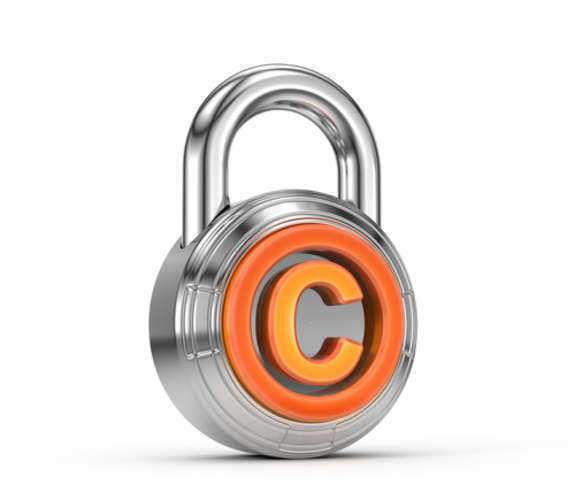Quick Guide to Famous Patent Cases
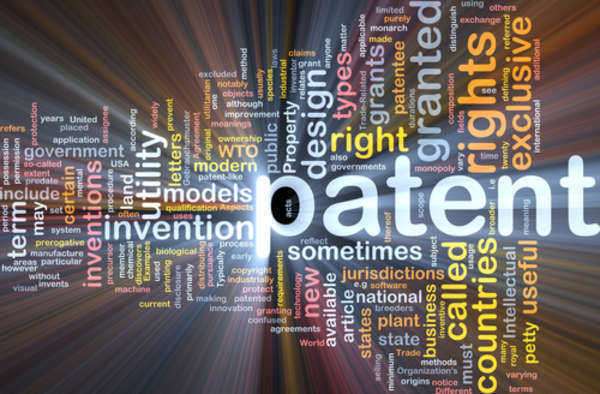

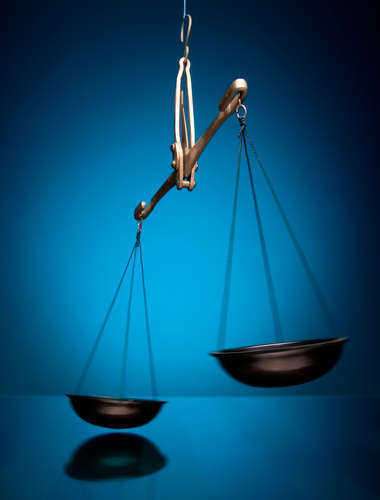
The issue of
sovereign immunity was raised in the Florida Prepaid Post-Secondary Education
Expense Board v. College Savings Bank case from 1999. The plaintiff, College
Savings Banks, filed a patent infringement suit against the defendant, Florida
Prepaid. The defendant was a State entity. The Court ruled in a 5-4 vote that State
sovereignty could not be taken away even though the Patent and Plant Variety
Protection Remedy Clarification Act says differently.
Case Description
The plaintiff filed a suit against the defendant
which happened to be a State entity. The plaintiff claimed the Patent and Plant
Variety Protection Remedy Clarification Act takes away sovereign immunity — or
immunity from liability — from states. The defendant claimed the Seminole
Tribe v. Florida outcome declared sovereign immunity could not be taken from
the State.
The
plaintiff relied on the 14th Amendment which gave the State no power to take
away property without due process, which included patent properties. The defense
claimed no law passed by Congress shall be able to curtail the protection held
by the states from patent infringement suits.
Ruling
In a 5-4 vote, the Supreme Court ruled the Patent
and Plant Variety Protection Remedy Clarification Act could not take away
sovereign immunity from the State of Florida. The Court said only a consistent
disregard for the property rights and patent rights of citizens could permit Congress
to take away sovereign immunity from a State. Since the plaintiff could not
prove the defendant demonstrated consistent patent violations, the State’s
protection in the form of sovereign immunity would remain.

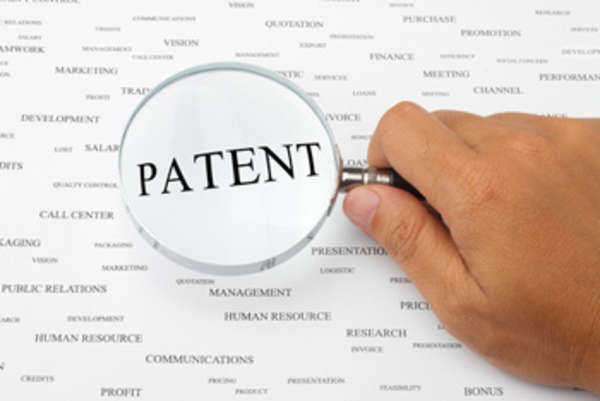
Hotchkiss, along with other inventors, claimed to own a valid patent for an improvement to doors and doorknobs. The plaintiff claimed their clay and porcelain door knobs and the way they were installed improved doors and the idea was original and inventive. They were attempting to sue the defendant for using their patent without permission. The Supreme Court in 1850 ruled that replacing one material for another was not inventive or a new discovery and the patent application by the plaintiffs was invalid.
Case Description
The plaintiffs replaced metal and wood doorknobs with porcelain and clay knobs made from pottery. They used similar methods of installation of other knobs as described by their patent application. The Secretary of State originally granted the patenting of the new doorknobs. The defendants in the case showed examples of doorknobs made from pottery and the process by which they are installed took place many years before the plaintiffs filed their patent application. Many different cities in New York, New Jersey and Pennsylvania had practiced the method of applying clay knobs to doors. This showed the plaintiff’s patent was not original, inventive nor non-obvious.
Ruling
The Supreme Court ruled the patent application requested by the plaintiffs was not valid. The practice of using clay and porcelain for doorknobs had been practiced many years prior to the plaintiff’s discovery. This showed the plaintiffs had not discovered or invented anything new. Also, replacing one material with another is an obvious adjustment that can be made to an item. The Court ruled the defendant did not infringe on the plaintiff’s patent because they did not own a valid patent.
This Supreme Court ruling was the first case to apply the concept of non-obviousness to the patentability of something. This case established that if something was obvious and non-inventive there was no point in patenting it because it has probably already been invented and used by the public. Once the public has already been using something there is no point in patenting it and neither ownership nor exclusive rights will be granted to a hopeful patent applicant.
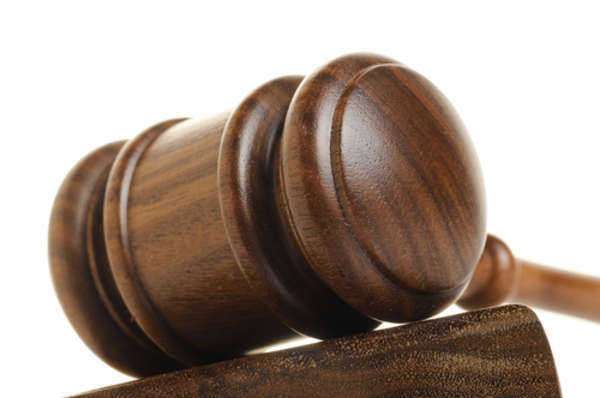
Teleflex
acted as the plaintiff and KSR as the defendant in the 2007 case involving
patent infringement. Teleflex believed KSR’s use of a vehicle control pedal
connected to an electronic throttle control was an infringement on a patent
held by the plaintiff. The District Court ruled in favor of the defendant
claiming the use was obvious, but the Federal Court reversed the decision. The
case went to the Supreme Court, which in turn reversed the decision back to the
District Court’s decision and ruled in favor of the defendant.
Case Description
The defendant combined an adjustable control pedal
to an electronic throttle control in automobiles. The plaintiff claimed this
was infringing on a patent claim they owned. The defense’s argument was a
simple argument that is used in many patent infringement cases. They argued the
combining of the two elements in the case was an obvious adjustment made to the
existing patent. The obviousness of the combination would have been realized by
anyone familiar with the art. The plaintiff did not feel there was a level of
obviousness attached to the combination performed by the defendant.
Ruling
The Supreme Court was clear in its ruling that the
combining of the two elements in the automobile was obvious. The Supreme Court
noted that the Federal Court was incorrect in determining that combining the
two elements discussed in the case were not obvious and someone familiar and
skilled in the art would not naturally combine the pedal and the electronic
throttle. The Supreme Court went as far as to say the combination was common
sense. The KSR decision is now used in almost 60% of similar cases. Many feel
there are too many instances that are declared obvious but obviousness will
only apply to those who are familiar with the art discussed in each individual
case.
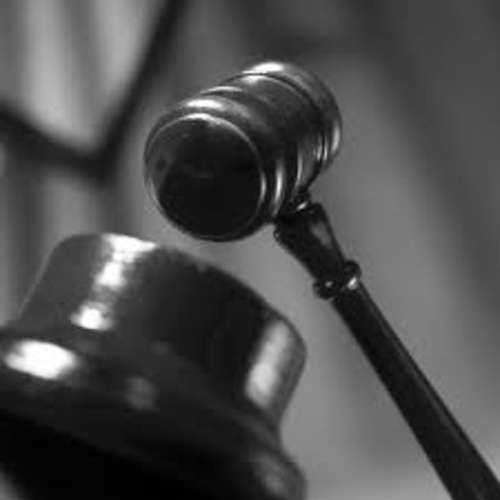
In the
Pennock v. Dialogue case from 1829, Pennock (the plaintiff) was seeking a
patent for improvements for making hoses he created but which were already
being used by the public. The court ruled in favor of the defendant on the
issue of patenting items already in the public’s possession. The case was heard
in the Circuit Court for the Eastern District of Pennsylvania.
Case Description
Pennock and Sellers created a new method for producing
hoses to transport air, water and other fluids. They did not patent their new
method when it was created in 1811. The public soon got hold of the new method
for the improved art of making hoses and 13,000 feet of hose had been
constructed in houses in Philadelphia. Samuel Jenkins claimed to have an
agreement with the plaintiffs to sell and supply hoses to hose companies in
Philadelphia.
Once the
hose companies began producing hoses using the plaintiff’s method the invention
was in the possession of the public and were subject to public use. The
plaintiff made no claim that from 1811 to the time they were ready to apply for
an invention patent that they were improving their hose-making method. The
plaintiffs did not claim to try and hide the new method of making hoses from
the public.
Ruling
The jury in this case ruled once an inventor
willfully gives up their exclusive rights after an invention is created and a
patent is not obtained, they cannot regain any rights once the public is in
possession of those rights. An invention that is in the public domain cannot be
taken out of that domain. Once an invention is legally open for public use it
cannot be taken away because that would disrupt any growth or room for
improvement within that invention.
If the plaintiffs had successfully obtained
an invention patent for their improvement to hose production they would have
had a valid claim against those profiting off of their improved hose production
method.
This case showed the importance of obtaining a patent.
Inventing something and being recognized as the creator does not offer enough
protection and rights to assure that the inventor will be the main person
profiting off of their invention. If the public gets hold of the knowledge or a
method for improvement before a patent is acquired, a patent request will be
denied because the invention is a part of public domain.

A & M Records vs. Napster was a major
intellectual property case that took place in 2001, pertaining to the illegal
file sharing of MP3 music files, which the record industry claimed
was copyright infringement. The United States Court of
Appeals for the Ninth Circuit affirmed the decision of the United States
District Court, for which the Northern District of California held the
defendant, Napster, may be liable for contributory infringement and vicarious
infringement of copyrights held by companies within the music industry.
This case was responsible for bringing
peer-to-peer file sharing services into public attention, which could
potentially be used to illegally share copyrighted material, and was the first
of several other similar cases.
The Plaintiffs
Although the case is referred to as “A & M Records v. Napster”,
the list of plaintiffs extends beyond just A & M Records. There were a
total of eighteen plaintiffs listed against Napster in the District Court suit,
all subsidiaries of the “big four” record companies: Universal Music Group, Sony Music Group, Warner Music
Group, and EMI. All four companies are members of the Recording Industry
Association of America (RIAA), a group formed in 1952 which represents the
recording industry distributors within the United States, making up more than
80 percent of all music officially released in the U.S.
Defendant
Napster was a company formed by eighteen year old Shawn Fanning at Northeastern
University. Napster was the first user-friendly peer-to-peer file sharing
service, which allowed any user to access other users’ MP3 files, which were
easily downloaded. Napster also introduced a simple searching ability from
their central server, allowing users to quickly access a list of available
files for which they would be searching. Napster
quickly rose in popularity to its peak in 2001, as millions of users continued
downloading song files for free from other computers around the world.
District Court
The record companies involved in the case filed to place a preliminary injunction
to cease the exchange of files, which they claimed violated music copyright law. They also sought claims against
Napster for contributory and vicarious copyright infringement. To counter this
argument Napster defended itself through fair use and substantial
non-infringing use, also claiming that the injunction requested by the record
companies violated their First Amendment right to free speech.
Judge Marilyn Hall Patel ruled that the
record companies had a valid argument against Napster and had successfully
proved irreparable harm to the record industry through music copyright
infringement. The injunction against Napster was granted and the judge ordered
a plan of action to be taken by Napster to remove files protected under music
copyright from their network. Napster immediately appealed to the decision to
the United States Court of Appeals for the Ninth Circuit.
The Appeal
Napster actively countered the injunction decision through an argument. The court, however,
decided that even though Napster did not directly profit off of the material
that was distributed over their networks, the excessive copying of works
constituted music copyright infringement. The Ninth Circuit consequently agreed
with the District Court’s conclusion that Napster jeopardized the record
industry’s sales.
Napster identified three points of fair use in which its service properly used
copyrighted material:
1. Napster claimed that the network could be used to
“sample” MP3 music files for a user to make a decision of whether or
not to purchase the record.
2. “Space-shifting” was also claimed by Napster, a
concept in which a user who already owns a legal copy of the music may legally
download the MP3 file through Napster’s network. This argument was proven
invalid because when a user downloads a file in Napster, it is immediately made
available to other users.
3. Napster also identified permissive distribution in its
fair use arguments, in which an artist can give permission for distribution of
copyrighted music through Napster’s system. The court allowed this practice to
continue.
The court also found that since Napster had the ability to regulate what its
users distribute over its networks, they had a responsibility to prevent music
copyright infringement from taking place.
Contributory Infringement
Napster argued in the Ninth Circuit Court that they had no way to distinguish a
copyrighted music file and a file that was not copyrighted, so they should not
be held liable for infringement. The court disagreed, however, and Napster was
found to be held
directly supporting the infringement of music copyright
material.
Vicarious Infringement
The Ninth Circuit Court sided with the District Court, agreeing that Napster’s
primary draw to users was the ability to illegally obtain copyrighted work.
Also, since Napster planned to expand and increase the number of its users in
the future, their activities were ruled to be inductive to financial gain from
illegal infringement.
Aftermath
Napster struggled with the injunction demands and when they were only able to
maintain a 99.4 percent efficacy in removing music copyright work, the judge
ordered Napster to be shut down until it reached 100 percent. Napster soon
filed for Chapter 11 bankruptcy and was forced to shut down after Bertelsmann’s
inquisition to purchase Napster was blocked by the court.
The record industry’s case against Napster had a large impact on copyright
infringement of music and other files on the internet. Other peer-to-peer
networks emerged in the wake of Napster’s demise, though
they were also subject to the same legal trouble.

In the Apple
Computer, Inc. v. Franklin Computer Corp. copyright infringement case, Apple
Computer, Inc., now Apple Inc., decided to name Franklin Computer Corporation in
a lawsuit in regards to the recent release of an operating system the company
had been distributing. Apple Computer, Inc. said that there was a direct
parallel to the operating system that the company itself had developed and
released and the new, Ace 100, by the Franklin Computer
Corporation.
Apple
Computer, Inc. filed the copyright infringement case at the United States
District Court for the Eastern District of Pennsylvania. The filing of
Apple Computer, Inc. on May 12, 1982, marked the date of the first copyright
infringement case to be litigated on a matter involving an operating system in
a high court.
Apple Computer, Inc. had released the operating
system, Apple II, in 1977 at the West Coast Computer
Faire. It was designed by engineer and co-founder of the company, Steve
Wozniak, along with other members of the team. Apple II proceeded Apple I, a personal
computer, which was the company’s first product release. The basis of the
copyright infringement case was the claim of Apple Computer, Inc., which stated
that Franklin Computer Corporation, a consumer electronics manufacturer, had
been distributing a replica of Apple II in their release of the Ace 100 in
1982.
One of the
largest arguments by Apple Computer, Inc. in the copyright infringement case
against Franklin Computer Corporation was that the operating system, Ace 100, had included some of the same mathematical logic and language
for the ROM as Apple II. Another major
citation on the basis of the copyright infringement case against Franklin
Computer Corporation was that Ace 100 featured a similar
motherboard scheme to that of Apple II.
The position of Franklin Computer Corporation in
the copyright infringement case was that, although the company had used many of
the concepts from Apple II in their creation of the Ace 100, it would
not have been quite as constructive or effective for the company to attempt at
creating a brand new operating system. The Franklin Computer Corporation
stated that the product would not have the capacity to achieve compatibility if
starting completely from scratch.
The company
went on to state that some components of the Apple II operating system were not copyrighted, so therefore they took on
the implication that they could be copied. The Franklin Computer
Corporation added to their defense in the copyright infringement case by
stating that they were in the midst of producing software that would be
completely independent.
The United States District Court for the Eastern
District of Pennsylvania declared the copyright infringement case of Apple
Computer, Inc. v. Franklin Computer Corp. in favor of Franklin Computer
Corporation. Dissatisfied with the verdict, Apple Computer, Inc. filed
for an appeal with the United States Court of Appeals for the Third
Circuit. By mid-1983, and just three business days after the District Court
had ruled in the favor of Franklin Computer Corp., the Federal court issued a
verdict in the copyright infringement case for Apple Computer, Inc.
The stated basis
for the ruling was that a program is protected under copyright law even if it
is written in a combination of print and object code. The ruling had important
implications for the enforcement of copyright on computer programs.

Baker v. Selden (101 U.S. 99)
is one of the earliest and most important of all copyright infringement cases. It is heavily cited in
explaining the idea-expression divide, a concept that outlines the underlying
concepts of copyright laws. It explains that U.S. copyright laws are set into
place to protect the expression of an idea rather than the idea itself. The
case, which took place in 1879, concluded that the exclusive rights to what is
known as “useful art” which may be written in a book are only
protected under U.S. intellectual property law through a patent. The
description itself contained in the book would be protected under copyright.
Background
A man by the name of Charles Selden obtained a
copyright for a book he wrote which was intended to portray an improved system
of bookkeeping entitled Bookkeeping Simplified. The book, although containing
only 650 words, contained mostly bookkeeping forms. There were also several
examples outlined in addition to an introduction.
Selden
created several additional books, which were arguably just new revisions to the
same original book. Selden was unsuccessful in selling his books, even after
attempting to sell them to several counties, as well as the United States
Department of Treasury. Before Selden’s death, he assigned his interest, which
was returned to his wife.
W.C.M Baker produced a book in 1867 which
described a very similar system to Selden’s system of bookkeeping. Baker was
able to sell the book to 40 counties in under five years. It was not long
before Selden’s widow, Elizabeth, discovered Baker’s success with Selden’s
similar bookkeeping techniques. She hired an attorney and took legal action
against Baker in 1872 and sued him for copyright infringement.
The Trial and Appeal
The court decided that Baker’s books contained
information and material which was too similar not to be liable for copyright
infringement. As a result, the court ordered a permanent injunction which
prevented Baker from further publication or sale of his book. Baker and his
legal team immediately filed an appeal to the Supreme Court of the United
States, which claimed that Selden’s work is not valid copyright subject matter.
The appeal process closely
examined the difference between patent law and copyright law. It
was found by the Court that the idea contained within a book is not enforced
through copyright law, but rather through patent law. Only the description or
expression of an idea is protected by a copyright. Justice Joseph P. Bradley
wrote of the case, “The copyright of a book on bookkeeping cannot secure
the exclusive right to make, sell, and use account books prepared upon the plan
set forth in such a book.” Baker v. Selden has been written into the U.S.
Code §102(b) of the Copyright Act.
